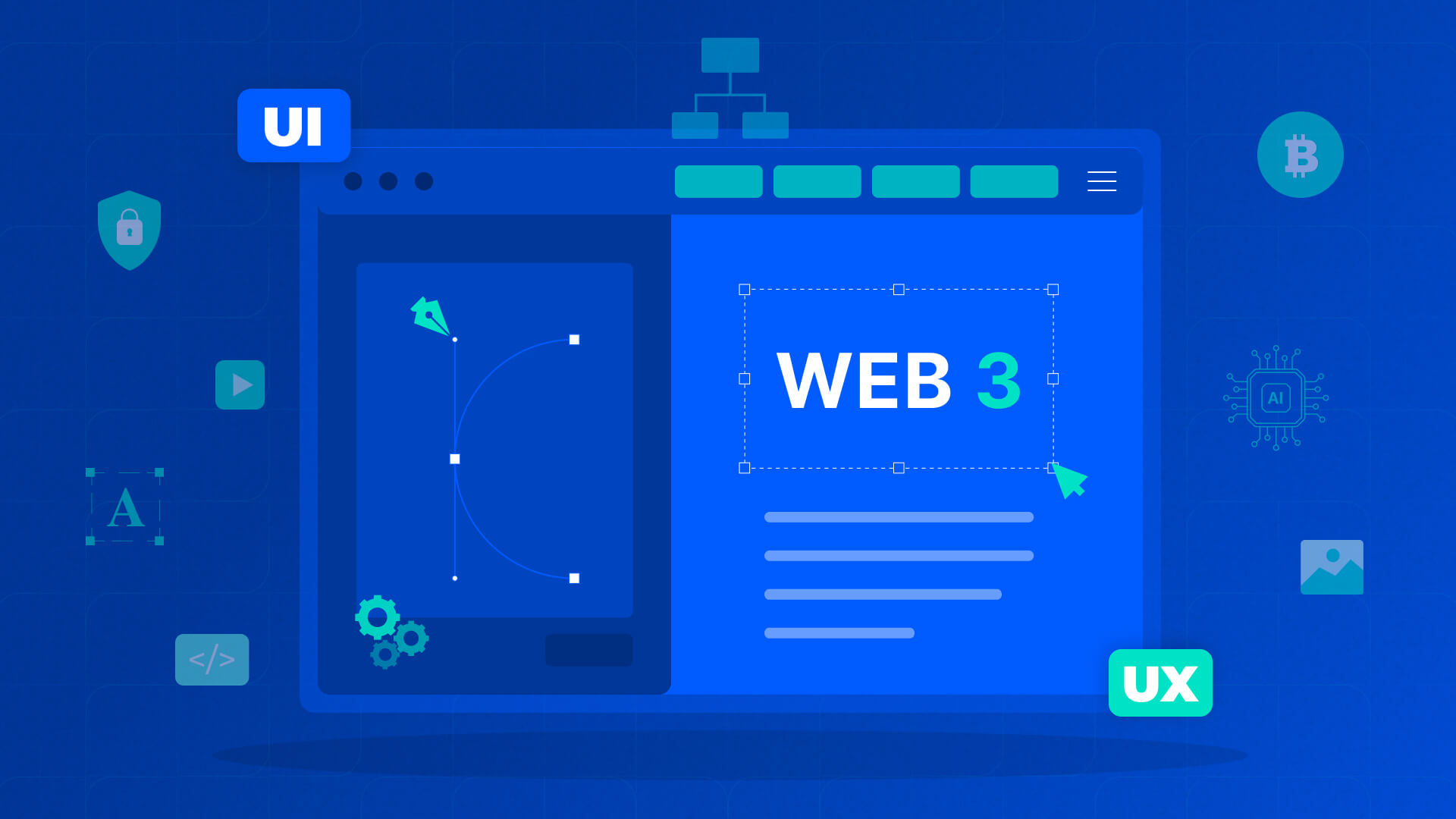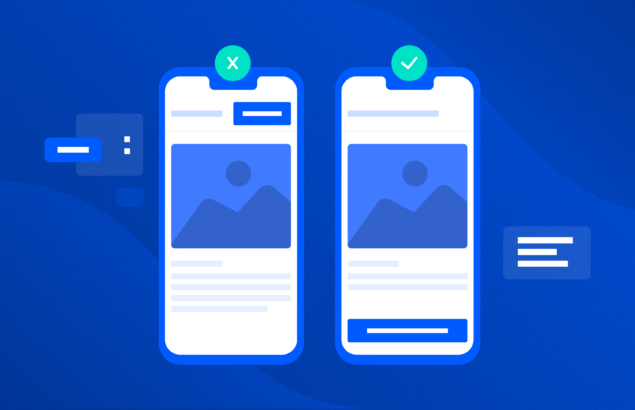
Quick Summary: Are you looking to develop decentralized platforms for Web3 but don’t know about the trends? Or do you want to know what principles to follow or the challenges you can face while designing Web3 UI/UX designs? Don’t worry. We have your back. Here is the detailed blog that has solutions to your problems. Let’s Explore.
The transition from Web2 to Wb3 is happening now. As the craze of cryptocurrencies is increasing, users are seeking a platform that gives them more control over online assets. Web3 gives them this control with its UI/UX design. Web3 provides decentralized platforms giving more control to users over their assets unlike Web2 which was centralized and did not give much control. Here in this blog, we will discuss in detail about Web3 UI/UX design, its principles, trends and challenges.
What is Web3 UI/UX Design?
With the digital advancement of the internet leading us to Web3, we have to optimize our UI/UX designs according to it. Web3 UI/UX is when we design Ui/UX for decentralized apps that are elements of the decentralized website with deep understanding of blockchain technology. The main goal of the Web3 design is to give users more control over their data, privacy and online identities making the internet a better place.
Key Principles of Web3 UI/UX Design
If you want to grow, you need to follow some principles. That goes the same with Web3 UI/UX design that allows users to have trust on the designs. You can provide them guidance, build community and make the process more transparent. It will make users feel empowered when they have more control over their assets.
Active Guidance
Making the navigation intuitive and simple is necessary for users as it affects their interaction with the design. If you want to make navigation easier in Web3 you must use decentralized finance (DeFi). It will help users identify their current location on the website and how to go back to home or previous page. Keeping the patterns identical to Web2 and using animated highlighting for text will make the navigation familiar to the audience.
Transparency
Web3 is all about enhanced transparency to users through blockchain and decentralized technology. It allows users to have access and verify transactions and data on the blockchain. Web3 UI/UX design must explain and clearly indicate financial turning points such as new contract generation, irreversible actions, actions that involve user identification and value or currency.
Community
If you ever have been a part of some community in your locality then you already know how they work in the upliftment of it. This is exactly how communities in Web3 UI/UX design work when there’s no centralization. Blockchain facilitates decentralized design-making process and governance which allows users to actively participate in the development and evolution of application and platform.
User Empowerment
When you get control over your actions, you feel empowered. That’s exactly how user empowerment in Web3 UI/UX design works. It aims to give you more control than you had in Web2 or Web1 designs. With this new gen internet, you will be able to control your digital identities and assets. It reduces the chances of losses. Blockchain interfaces facilitate smooth management of decentralized apps, digital tokens and more.
Future Trends in Web3 UI/UX Design
Trends are what make users follow new designs. They act as magnets to users and attract them. You can also follow trends to get more user engagement. Trends like simplified onboarding, interactive simulation with 3D, Real time feedback, and many more. Personalization is also another trend which was followed in both Web2 and Web3.
Simplified Onboarding
Some users find the onboarding process in Web3 UI/UX designed apps because it's quite a complex step in it. With evolution in technology, brands are finding a way to make the onboarding for users new to blockchain. They are using similar elements and interfaces from Web2 in Web3 for making the transitions more gradual and less daunting.
Interactive Simulation with 3D and AR
You know how 3D and AR technologies make the games exciting. Now you will be able to feel this impact on the next gen internet. This tech will extend to decentralized finance (DeFi), metaverse dApps allowing users to interact with each other, visualize data, and perform transactions in a more intuitive way.
Real Time Feedback about Transactions
Customers getting real time alerts about their transactions is one of the most crucial aspects. Web2 had swiftness when it came to providing real time transactional alerts. Web3 apps lack this element. However, you can make real-time UI elements that give customers their current transactions’ alerts reducing their anxiety and building trust.
Cross-Platform Integration
The best part about Web3 UI/UX design is that you can move assets from one network to another allowing you to interact with multiple blockchains and platforms together. Web3 UI/UX work on making the cross-platform integration smoother. New gen dApps will allow cross platform integration helping users get more control over their data.
Personalization
Some things never change. This phrase exactly fits the transition of personalization from Web2 to Web3. Personalization is an important aspect that Web3 can offer by integrating machine learning and artificial intelligence. It will help you give tailored recommendations and customized dashboards to your customers.
Improved Privacy and Security
With enhancements in technologies, unethical practices like hacking, data and identity theft are also on the rise. Web3 has blockchain technology and includes decentralized platforms that improves privacy and security through UX designs. Soon the UI/UX will act as the first line of defense protecting users from security breaches and transactional errors also.
Challenges for Web3 UI/UX Design
Web3 UI/UX design is going to face a lot of challenges gaining users’ trust and acquiring them from Web2. As Web2 had a long run and users trust it more than new gen internet technology. Below are some listed challenges that you might face when developing Web3 UI/UX design.
Explaining Complex Concepts
Every UI/UX designer knows that complexity drives customers away, while simplicity attracts. Customers avoid trusting anything that is complex to understand and leave it, which leads to increased churn rates. It is a challenging task for Web3 UI/UX designers to translate complex blockchain ideas, Tokenomics and smart contract features into simple information.
Instilling Trust in Product
It is going to be hard for Web3 platforms to gain trust of users but it is important to establish trust because users have control over their assets in a decentralized economy. However, what’s more difficult for you is communicating these security standards to users in an engaging and dynamic way along with developing them for safety.
Integrating Blockchain Data
Integrating blockchain data into user interfaces is one the most difficult challenges that Web3 UI/UX designers face while developing it. They have to present on-chain data in such a way that it is easy to understand and helpful to both inexperienced users and blockchain experts which reduces churn rates.
Conclusion
Now, you have read the detailed blog about Web3 UI/UX designs. And now you know what challenges you can face and the trends you can follow when developing a Web3 UI/UX design. Keep all the key principles of Web3 because it will help you provide active guidance to your users in transactions or in transitions from one interface to another. And make sure that the integration process is smooth. You can hire us for Web3 UI/UX design services. We will get you the best UI/UX designers who know market trends and understand your needs. Contact us for more details.
Index
Would you like to Listen?
Related Articles
Get the inside scoop on the latest UX industry happenings and trends from our expert UI UX professionals.


